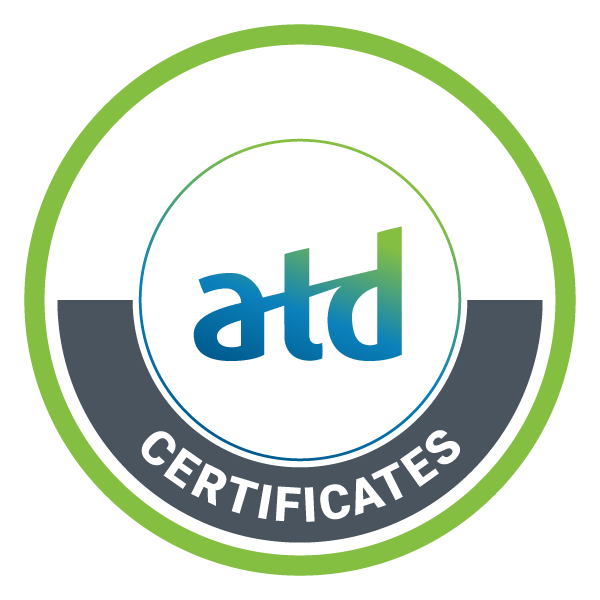Instructional Design Certificate
Leverage exclusive ATD templates and tools to develop the most powerful, bottom-line focused learning.
Design and develop outcome-based learning using proven instructional design approaches, practical models and templates, and a process that considers learner and stakeholder input.
Live Online
Face to face
Private training
Instructional Design Certificate: Course Info
As an instructional designer, you have the power to shape organizational results by designing learning experiences that give participants the knowledge and skills needed to perform their jobs well. To be an effective instructional designer, you need a structured, step-by-step design process that you can rely upon to create outcome-based training.
In this Instructional Design Certificate course, you’ll gain access to the leading approaches, design models, and tools you need to create transformative learning events. The program consists of 10 modules that address all aspects of the instructional design process in detail: assessing organizational needs; understanding and designing for knowledge, skill, and attitudinal gaps; developing instructional materials; and evaluating effectiveness—giving you a complete playbook for how to create training programs.
As you go through the course, you’ll have the opportunity to practice each step of the design process—getting guidance and feedback along the way. You will apply what you learn to a case study that simulates a real-world work scenario.
Research-Backed Content: ATD’s Instructional Design Certificate is backed by years of research and learning science. This course is aligned to the Instructional Design Capability of the Talent Development Capability Model™. The concepts covered are reflected in the TDBoK™ Guide: Talent Development Body of Knowledge, second edition, the definitive resource for the talent development profession.


Format
Face-to-Face
Live Online
Private Training

Roles
Instructional Designer

Capability Areas
Performance Improvement, Learning Sciences, Instructional Design

Level
Capable

Language(s)
Chinese
English

Credits
APTD 21
CPTD 21
CEU 2.1
HRCI 21
PDC 21

Recognition
ATD Certificate of Completion, Digital Badge
FAQs
Course Topics
Dates & Locations
Time Zone: UTC
Credits & Recognition
 ATD Certificate of Completion
ATD Certificate of Completion Digital Badge
Digital Badge 21 Learning Hours
21 Learning Hours 2.1 CEUs
2.1 CEUs| Additional Credits | Type | Credits | |
|---|---|---|---|
| APTD Credential | Professional Development Hours/Recertification Points | 21 | More Info |
| CPTD Credential | Professional Development Hours/Recertification Points | 21 | More Info |
| HR Certification Institute® | Recertification Credit Hours | 21 | More Info |
| Society for Human Resource Management | Professional Development Credits (PDCs) | 21 | More Info |
Facilitators
WHAT OUR PARTICIPANTS ARE SAYING
Testimonials
Have a Group to Train?
Want to purchase multiple seats or schedule a dedicated team training experience tailored to your organization’s needs? Fill out the form below to schedule a call with an ATD Enterprise Solutions Account Executive to learn more.
